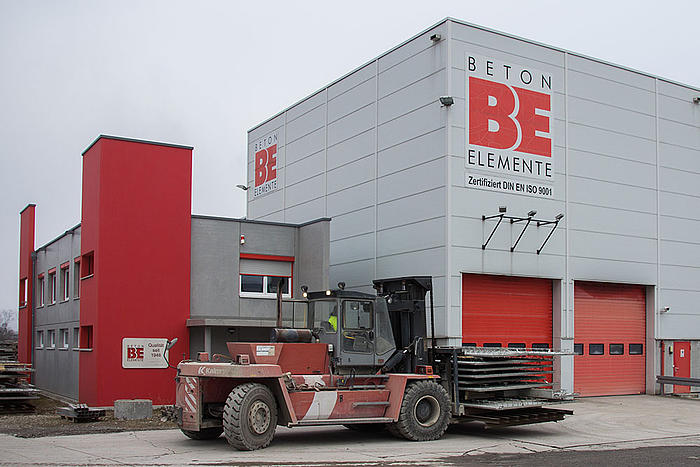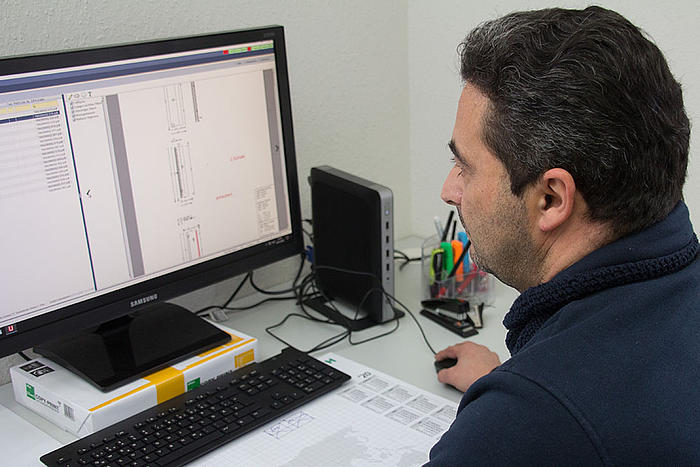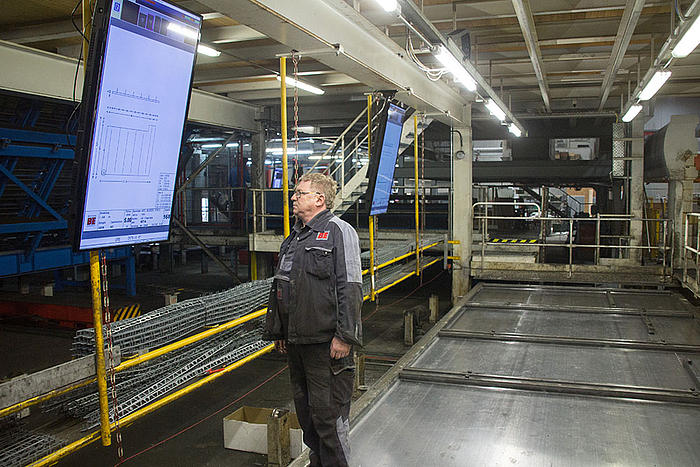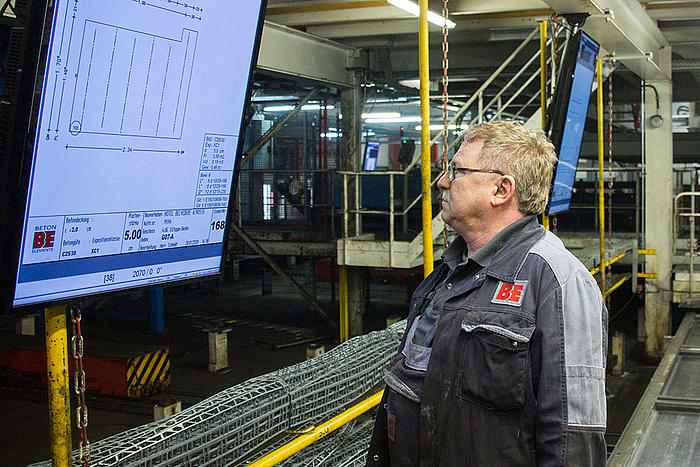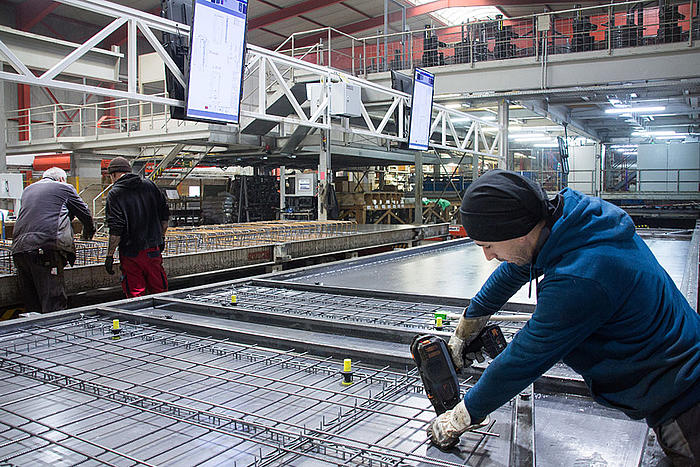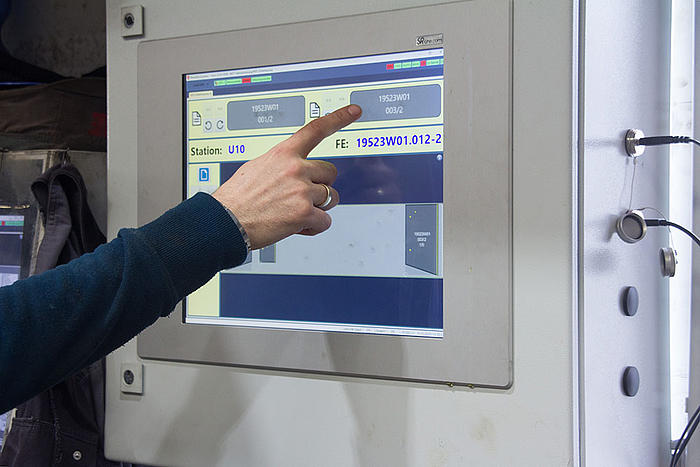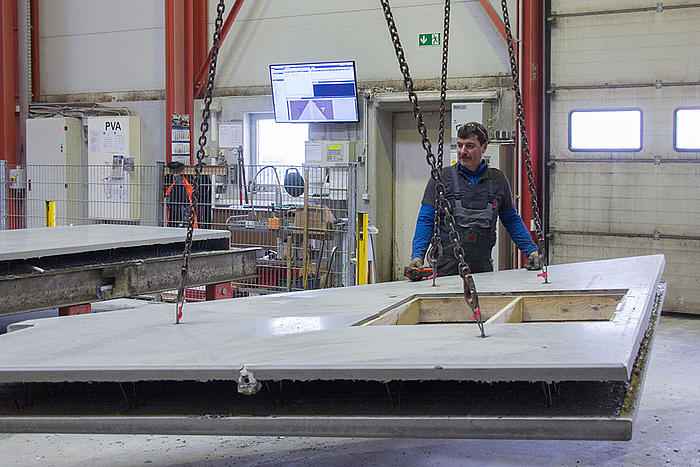Banning paper from production as far as possible: That was the goal of the company BE Beton-Elemente in Steißlingen. Instead, 15 large screens and six monitors have recently been deployed in the production plant. The motives behind the modernization as well as the configuration and the new process flows are as follows.
The medium-sized company BE Beton-Elemente has its headquarters in Steißlingen, near the town of Singen in the Lake Constance region. BE has been producing precast concrete elements since 1948, making it one of the oldest companies in the industry. BE mainly manufactures precast floor slabs, double walls and occasionally thermal walls. The company has a subsidiary in Biel, Switzerland, and serves Western Switzerland through it. Production takes place exclusively in Steißlingen. Part of the company's philosophy has always been to work at the cutting edge of production technology. For example, BE was one of the first companies to use a demolding robot and to use laser projection for quality assurance.
Status quo and modernization projects
The modern production plant in Steißlingen has a pallet circulation system with 22 work stations, a combined shuttering and demolding robot, a reinforcement system, a laser projection system for quality control, an automatic concrete spreader and turning device, and a curing chamber with 65 places supplied by an automatic storage and retrieval system. The integrated control concept comes from Unitechnik. UniCAM is used as the production master computer.
The current modernization step of the plant provided for upgrading the control technology to the latest generation. In the course of the conversion to UniCAM.10, however, not only the old processes were to be emulated. The goal was to make production more digital and modern, and to display all relevant information just-in-time on the screen instead of printing it on paper.
Work instructions and paper consumption
Previously, each pallet received a printed overview of the project and an individual sheet for each element. These working papers were printed in the technical office. Then the work preparation department added handwritten notes or highlighter markings on some individual sheets. "For example, we color-coded ISO baskets to make it easier to assign them in production" explains Carlos Gaspar, the master computer specialist at BE. The papers were then placed on the production pallet and accompanied it through all work stations to the concrete distributor. Up to now, approximately three to four sheets per pallet ran through production. This adds up to 200 sheets a day and almost 5,000 sheets a month, which were disposed of at the end of the run.
However, these ecological aspects were not the only motivation for the consistent digitization of the processes. The company wanted to take advantage of the good economic phase to optimize the productivity of the production plant. In addition, the company wanted to create a modern and future-oriented working environment in times of a shortage of skilled workers.
Provide information in production just-in-timeThe concept, which BE Beton-Elemente developed together with Unitechnik, was to install 15 large screens and six computer monitors in the facility. Standard 55-inch LED televisions were used as large screens. Due to the drop in prices in this segment, the use of these devices is now economically justifiable. Where primarily single sheets are to be displayed, the TVs were mounted vertically. When displaying a DIN A4 PDF, this achieves the largest possible display. At the workplaces "Additional formwork and built-in parts" and "Reinforcement fixing and final inspection", two vertical TVs are suspended along the pallet. The TVs are controlled by small computers. The so-called thin clients have no hard disk of their own and obtain their data directly from the UniCAM.10 master computer via the network. Two televisions or monitors can be connected per thin client. One challenge in configuring the system was that the distance between the thin client and the screen must not exceed 10 meters.
The individual sheets are displayed as PDF documents. These PDFs are generated at BE by a Nemetschek CAD system. In the "paper process", annotations for production were now noted on the single sheet extracts in work preparation. This function was also replicated in the digital version. A PDF editor integrated into the master computer allows the employee in work preparation to insert comments and markings. These additional comments are saved together with the PDF. Unlike the old process, however, the notes are not disposed of with the paper sheet, but are stored on the master computer.
Back in the production line: When a new pallet enters the "additional formwork and built-in parts" station, the new information is automatically loaded and displayed on the screens. At this station, two vertical large screens hang along the pallet. At the top, the pallet overview is displayed. Below that, the first element of the pallet appears. The neighboring screen shows the second element. Clicking on another element in the overview, the single sheet for the selected element is displayed. The different information is located in different layers of the PDF. Layers can be turned on and off as desired. For example, the reinforcement information can be switched on and off.
A separate panel PC with touch screen offers a particularly convenient option for screen control. It is built into a robust industrial cabinet and mounted directly at the employee's workstation. The elements of the current pallet can be assigned to the screens by touch. When the work at the station is done, the next pallet can already be called up, e.g. to prepare the required built-in parts.
Another application is the concreting station. Here, the screen has the task of displaying all elements of the pallet at a glance. Therefore, the individual sheets of all elements are displayed side by side. The monitor is mounted transversely at this point in order to provide as much width space as possible.
Large screen as host computer monitorSome large screens are not used for displaying the individual sheets. Certain masks from the master computer are displayed there. At the stacking station, this is the retrieval list. On another screen, the plant visualization is running, and on another, in a central location, the dashboard with the key production figures. No one should have to run to the control station to call up the information they need. The information reaches the employees directly and is displayed exactly where it is needed. This saves unnecessary trips and queries.
Employees support process optimization
At BE, digitization is a project in which all employees are involved. The digital infrastructure, in the form of large screens at the workplaces, is not the end but the beginning of a change process. Together, processes are improved and new ideas are tried out. The digital tools increase the scope for design in the process.
Conclusion
Falling prices for TV sets make a digital infrastructure in the production area affordable. Even in the first step, digitizing existing processes brings numerous advantages: raw materials are saved, walking distances and queries are reduced, and transparency is increased. An attractive and modern working environment is created. This creates room for new ideas, motivates employees and has the potential for many small increases in productivity. The big advantage, however, is the opportunities in the future. In particular, companies are benefiting from the dynamic development in end devices. The next step, for example, could be wearables that provide information even more conveniently and enable intuitive feedback.
